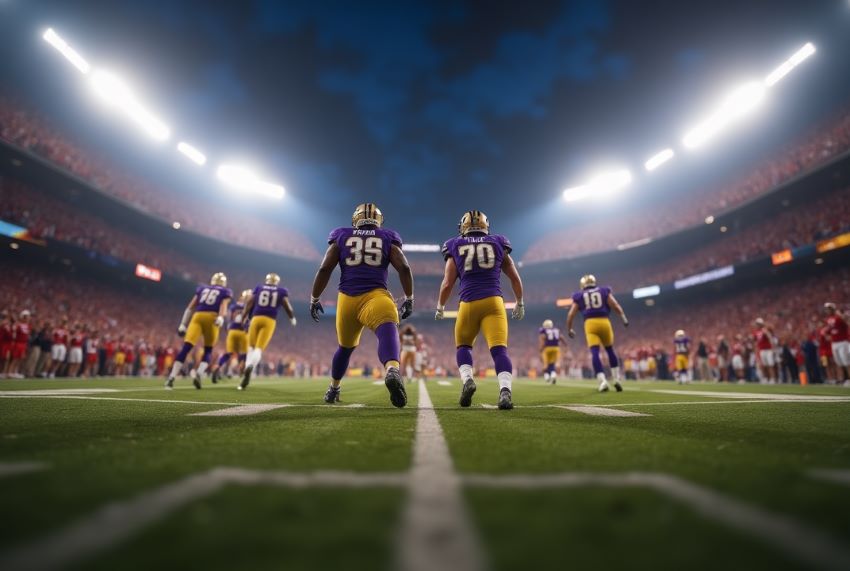Washington’s Epic Journey To Maryland: College Football’s Longest Travel Distance
Washington travels 2,748 miles to face Maryland in a conference game, highlighting extreme travel distances in modern college football schedules.
In 2025, college football is experiencing never seen before travel distances for league matches, with teams traveling thousands of miles for each game. Over the weekend, University of Washington players were to play University of Maryland. It would be a 2,748 miles journey from Husky Stadium to SECU Stadium, making Maryland and Washington one of the longest distances games in the Power Four conference. This takes travel distances in the sports to a new level. It shows the sport’s new realities and the challenges in travel logistics that teams are now having. This is a direct result of the sport’s conference realignment and its new challenges.
The Coast-to-Coast Matchups are a Direct Result of Conference Changes
Just a few years before now, the college football conference changes where unlikely. The western-most members of the Big 10 is now in California, while the eastern most in New Jersey. The Big 12 and the ACC are similar in the changes they have made by reaching a cross multiple time zones. The games is Washington and Maryland shows the distance league members are now making to play games that were previously seen as regional contests.
Now, all teams, coaches, and athletic departments need to think through travel plans much more strategically and in greater detail. Specific flights need to be chartered and coordinated to ensure that the full suite of athlete performance and safety needs are met. Each of the many travel requirements placed on the teams needs to be fulfilled. More and more, travel planning works within the bounds of the fully government- and public safety- outlined plans that cover travel to airports and the use of public health guidelines during travel.
Longest Travel Distances in 2025 College Football
Of the longest conference game trips during the most recent years, the most noteworthy are the two games in 2025. In September, Boston College made a 3,126 mile trip to Stanford. Later in the month, Cal made a 3,085 mile trip to face Boston College. Washington’s trip to Maryland, which placed 13th, shows just how far teams are now required to travel within the U.S. for conference games.
Other games that also required long-distance travel include UCLA at Rutgers, Penn State at Oregon, and Stanford at NC State. As college football has begun to shift from a primarily regional to a nationwide competition structure, the amount of travel and the need for travel planning become more central to team strategy.
Challenges of Coast-to-Coast Travel
When you think of coast-to-coast travel for teams like Washington, think of something beyond just getting on a plane. It’s a very elaborate process that involves coordinating players, staff, and even equipment. Each one of those groups needs to be sent on a transport system that guarantees safety and being on time to the destination. In the past few seasons, teams have had complications akin to runway sizes at smaller regional airports resulting in longer trade-off travel times in order to get larger planes for non-stop travel.
Long travel times and crossing time zones increases the burden on athletes’ performance and recovery schedules. Most travel fatigue is reversible to an extent. The counter-affect plans focus on rest times, the order of meals, and strategic practice times. Transport officials in each state are quoted on standards for streamlining order of operations for safety and travel time.
Impacts on Game Preparation and Fan Engagement
Traveling thousands of miles for a single game can disrupt typical preparation routines. Coaches adjust practice sessions to account for travel fatigue, and players must adapt to unfamiliar time zones and climates. At the same time, fans face challenges attending away games, though modern broadcasting and digital engagement have made following long-distance matchups easier.
Even with challenges, these far distances offer special opportunities for the athletes and their fans, as they get to see and enjoy new places and cultures. The game in question, Washington and Maryland, not only examines the athletic skill of the college teams, but also reflects the college football landscape’s modern perseverance and flexibility.
Conclusion: The New Reality of College Football Travel
The Maryland-Washington matchup is a great example of how much college football has changed because of conference realignment. It shows the sport’s new status as a nationwide phenomenon, as it now entails an immense distance of travel for teams to reach their league games. The trek spans 2,748 miles, and while it provides fans with thrilling games to watch as the teams travel from one coast to the other, it also presents a logistical challenge for the players, their coaches, and the support staff.
With the rapid growth of college football, the need for flexible and efficient travel systems has become a priority. For the first time in history, the college football landscape is fully operational on a national basis, as almost any game, even one within a conference, could entail a cross-country trip.
The post Washington’s Epic Journey To Maryland: College Football’s Longest Travel Distance appeared first on Travel and Tour World


Comments and Responses
Please login. Only community members can comment.